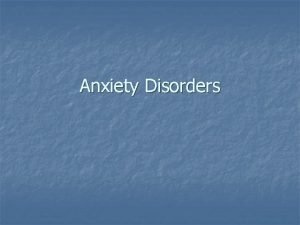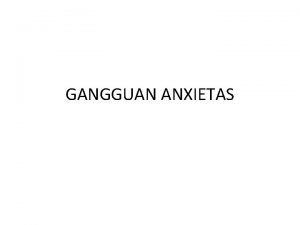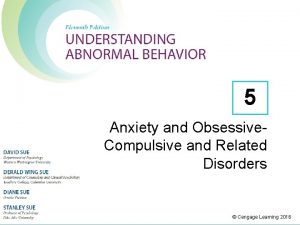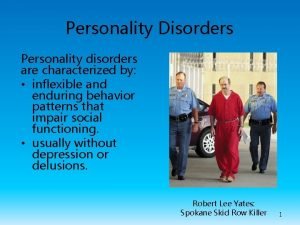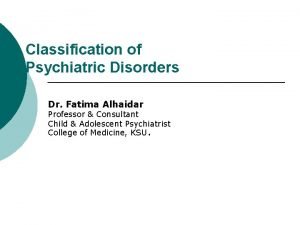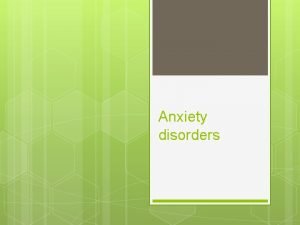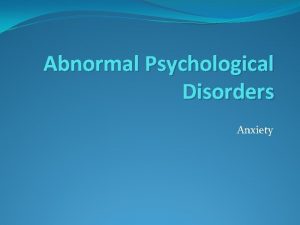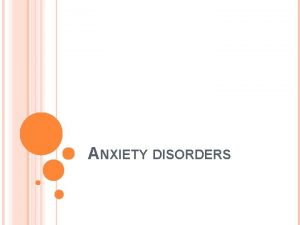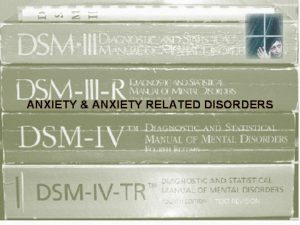Anxiety Disorders The most common psychological disorders What






- Slides: 6

Anxiety Disorders The most common psychological disorders.

What are Anxiety Disorders? Psychological disorders characterized by distressing, persistent anxiety or maladaptive behaviors that reduce anxiety. Disrupt social or occupational functioning. Most common type of psychological disorder. 4 main types of anxiety disorders: Panic Disorder, Generalized Anxiety Disorder, Obsessive-Compulsive Disorder, and Phobias.

Panic Disorder Sudden, frightening episodes of panic which occur without cause. Involve feelings of terror and physiological conditions such as a pounding heart and difficulty breathing. These attacks can lead to concern about future attacks. May lead a person to avoid certain typical activities (driving, shopping malls, classes, air travel, etc. ).

Generalized Anxiety Disorder Characterized by persistent high levels of anxiety and excessive worry. Physiological symptoms similar to panic attacks, but not as severe and more persistent. Can also cause tension, nausea, fatigue, and headaches.

Obsessive-Compulsive Disorder Anxiety caused by upsetting involuntary thoughts (obsessions) and the need to do certain things repeatedly (compulsions) in response to the thoughts. Fear that something bad will happen if one does not give in to these urges. People with OCD know that their behavior does not make sense, but they still need to reduce the anxiety by doing the behavior.

Phobias Persistent, irrational, unrealistic fear of specific objects or situations. Exposure to a feared stimulus causes intense fear or panic (which decreases when the stimulus is removed). 3 subtypes: simple phobias: spiders, snakes, heights, etc. social phobias: public speaking, shyness, stage fright, etc. agoraphobia: open spaces / leaving the house

